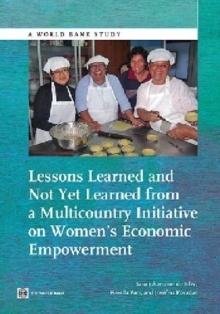
Economics of South African townships : special focus on Diepsloot Paperback / softback
by World Bank
Edited by Sandeep Mahajan
Part of the World Bank studies series
Paperback / softback
Description
Countries everywhere are divided into two distinct spatial realms: one urban, one rural.
Classic models of development predict faster growth in the urban sector, causing rapid migration from rural areas to cities and raising average incomes in both realms.
South Africa faces an unconventional challenge in that it has symptoms of a spatial realm that is not rural and not fully urban.
In many ways, South African townships - and especially informal settlements - are similar to slums in the developing world, although never was a slum formed with as much central planning and purpose as were some of the larger South African townships.
Unlike urban slums, most townships and informal settlements are geographically distant from urban economic centers.
The near absence of an affordable public transport system makes job seeking and other forms of economic integration prohibitively expensive.
Motivated by the uniqueness of townships and informal settlements in South African economic and social life, Economics of South African Townships: Special Focus on Diepsloot seeks to develop a systematic understanding of the structure of the township economy, yielding a rich information base on the migration patterns to townships and informal settlements, changes in demographic profiles, labour market characteristics, and access to public and financial services.
Economics of South African Townships then looks closely at Diepsloot - a large township in the Johannesburg Metropolitan Area - to vividly identify the economic realities and choices of township residents.
Given the current dichotomous urban structure, modernising the township economy and enabling its convergence with the much richer urban centers may unleash significant productivity gains.
Breaking out of the current low-level equilibrium, however, requires a comprehensive and holistic policy agenda, with significant complementarities among the major policy reforms.
Although the study tells a rich and coherent story about development patterns in South African townships and points to some broad policy directions, its research and analysis will generally need to be deepened before being translated into direct policy action.
Information
-
Out of stock
- Format:Paperback / softback
- Pages:294 pages
- Publisher:World Bank Publications
- Publication Date:30/08/2014
- Category:
- ISBN:9781464803017
Information
-
Out of stock
- Format:Paperback / softback
- Pages:294 pages
- Publisher:World Bank Publications
- Publication Date:30/08/2014
- Category:
- ISBN:9781464803017










